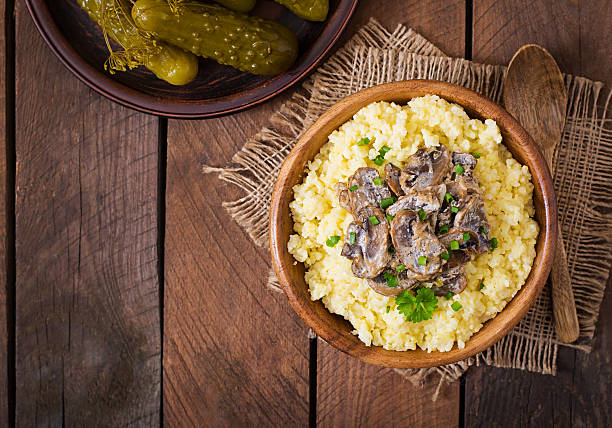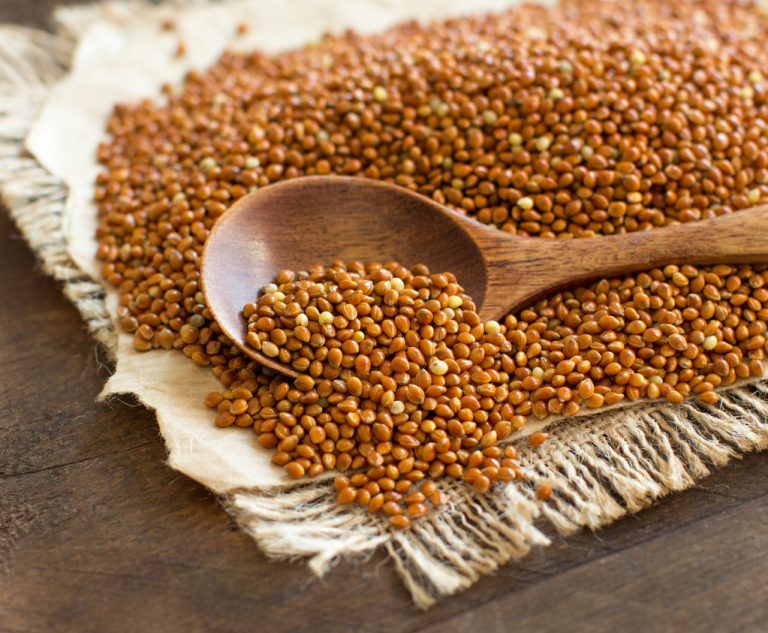Brown millet – the robust ancient grain
Brown millet are small brown pellets that are very firm and do not soften when steamed like golden millet. Millet is a staple food in many developing countries and is a grain.
Brown millet provides valuable carbohydrates, vitamins, minerals, and fiber as well as secondary plant substances. While most types of grain also contain gluten protein, this variant of millet does not contain it. Rather, it is gluten-free and is therefore becoming more and more popular with us as a side dish. Golden millet is also gluten-free.

Also read the Cooking & Kitchen article Worth knowing: Wholemeal flour and gluten-free flour.
Golden millet – the “blonde” sister of brown millet
Golden millet (common table millet) consists of golden-yellow grains and is offered peeled. In contrast to brown millet, it becomes soft when steamed and can be used in many dishes, whether savory or sweet.
Brown Millet
Unlike golden millet, brown millet is not used as a side dish, but as a dietary supplement. In addition, as an unpeeled variant, it is one of the whole-grain cereals and must first be ground in order to be able to use it.
In addition, it is usually offered in health food stores with a special grinding process (Centro phone ground). The ground in this way can also be easily utilized by the human organism. All in all, this type of millet can be eaten raw.
It is important to mention that brown millet should not be heated. Instead, it is recommended to take the cold.
So brown millet is more common on the plate
In order to provide the body with sufficient nutrients, one to four tablespoons should be consumed daily. On the one hand, you can either stir them into food or drinks, on the other hand, you can sprinkle them over muesli. You can also use them in bread. However, some nutrients are lost during the baking process.
Health effects of brown millet
Millet and its subspecies are rich in minerals (silicon), trace elements (fluorides, sulfur, iron, magnesium, zinc), and vitamins (especially B vitamins). Basically, there are more nutrients in brown millet than in golden millet.

Due to the high silicon content, some arthrosis patients have had good experiences with it. In addition, the silica it contains is good for hair and nails. Also, read the Cooking & Kitchen article Selenium & Silicon.
Grinding in our own grain mill
In principle, grinding in your own grain mill is possible. However, the brown millet is not as fine as with Centro phone grinding. Pour the ground millet over the yogurt and wait a bit before adding the rest of the muesli.



